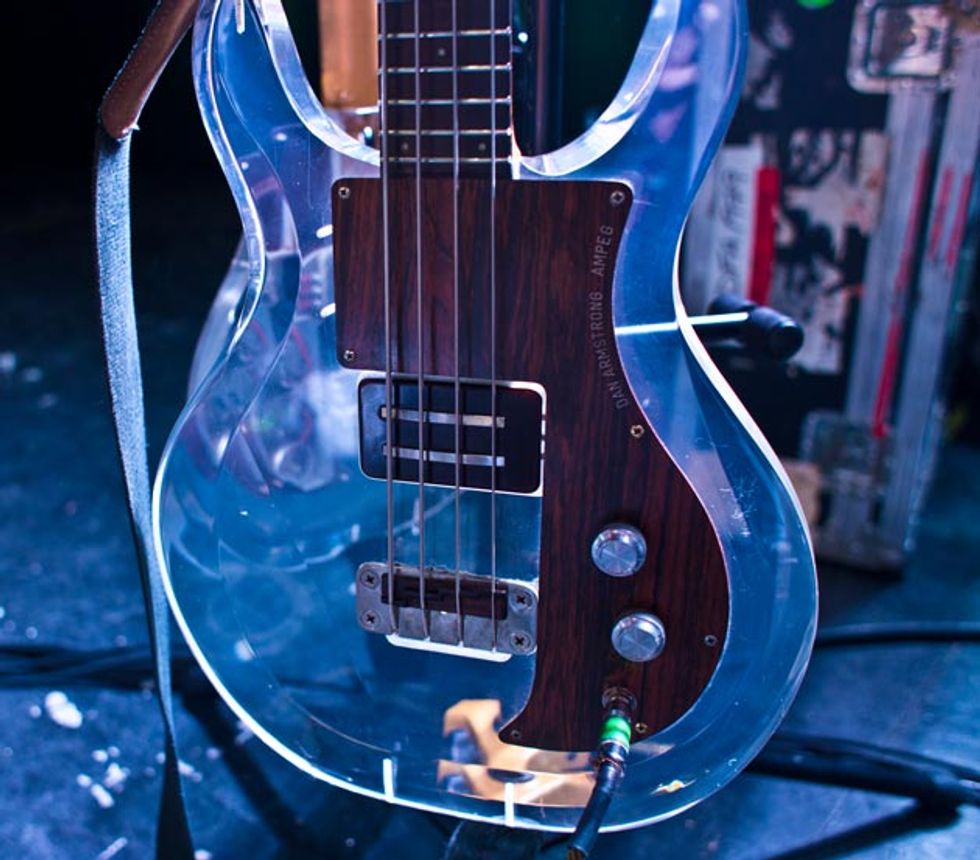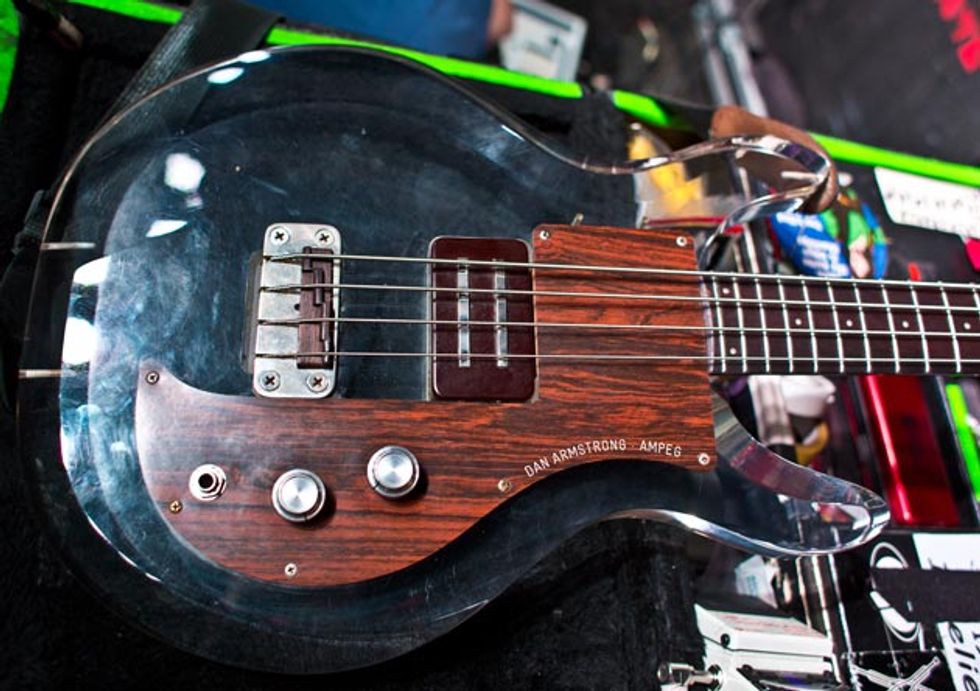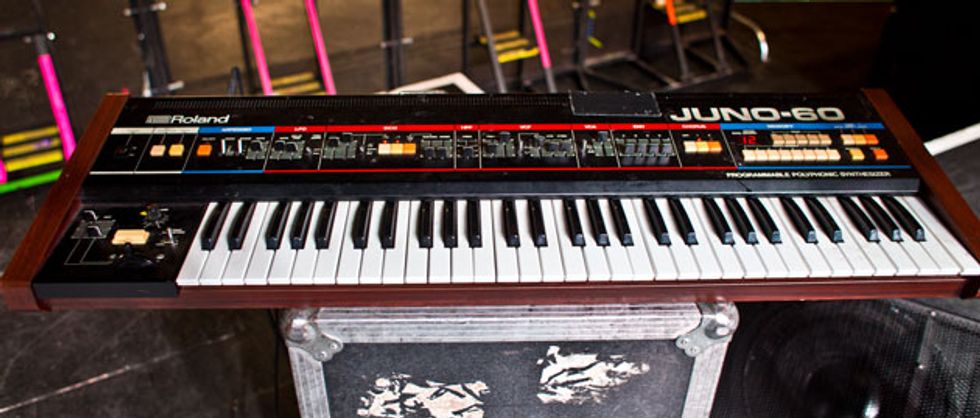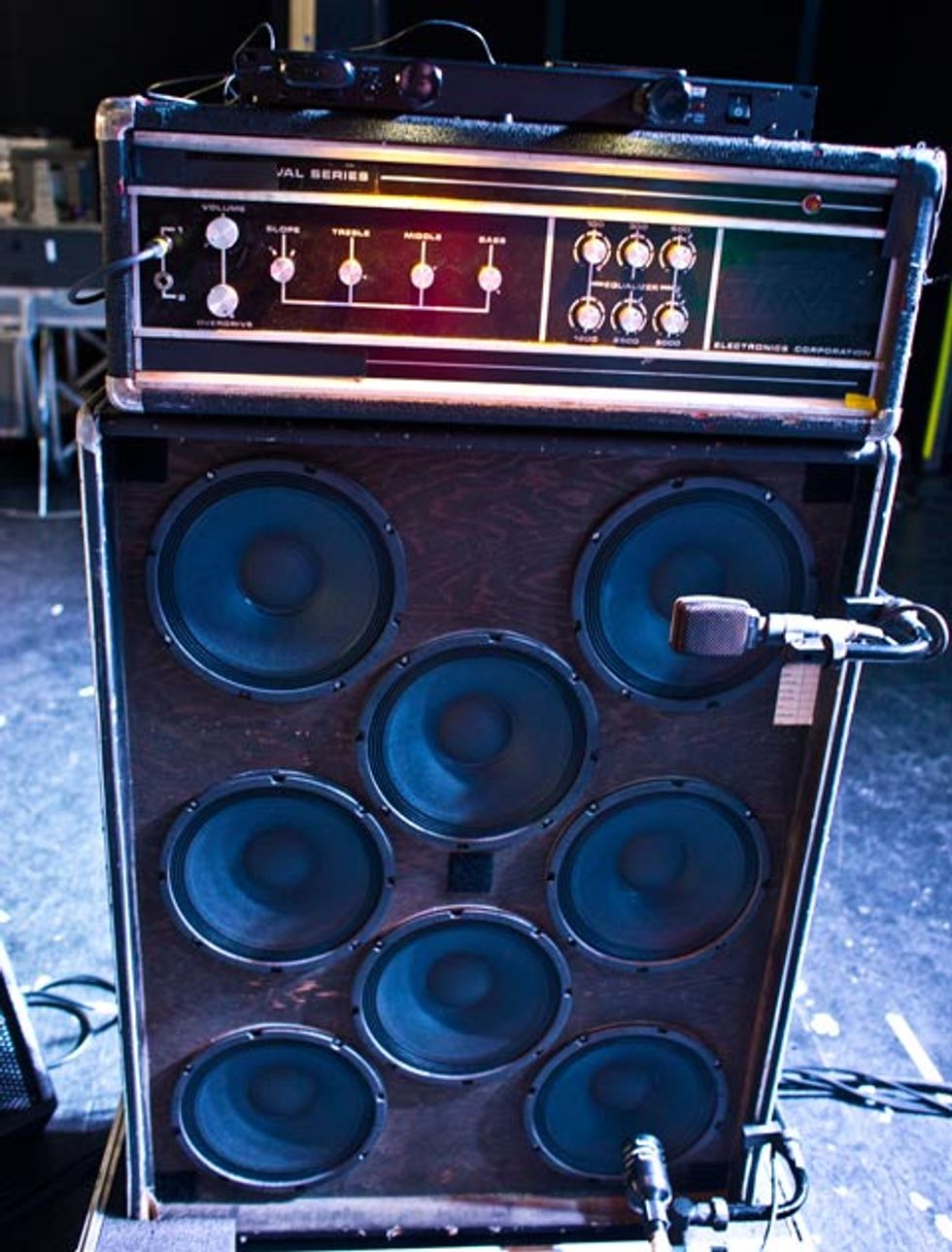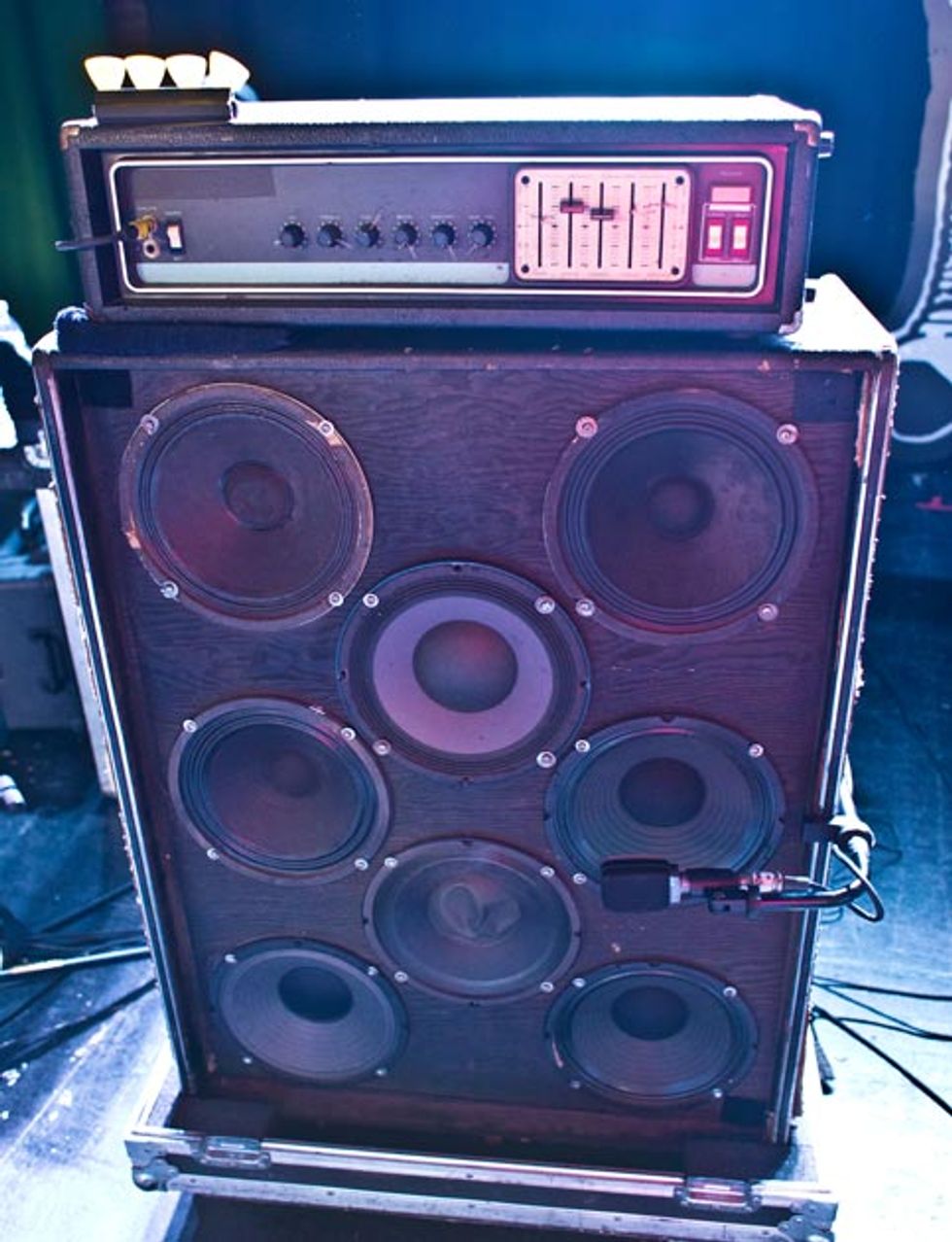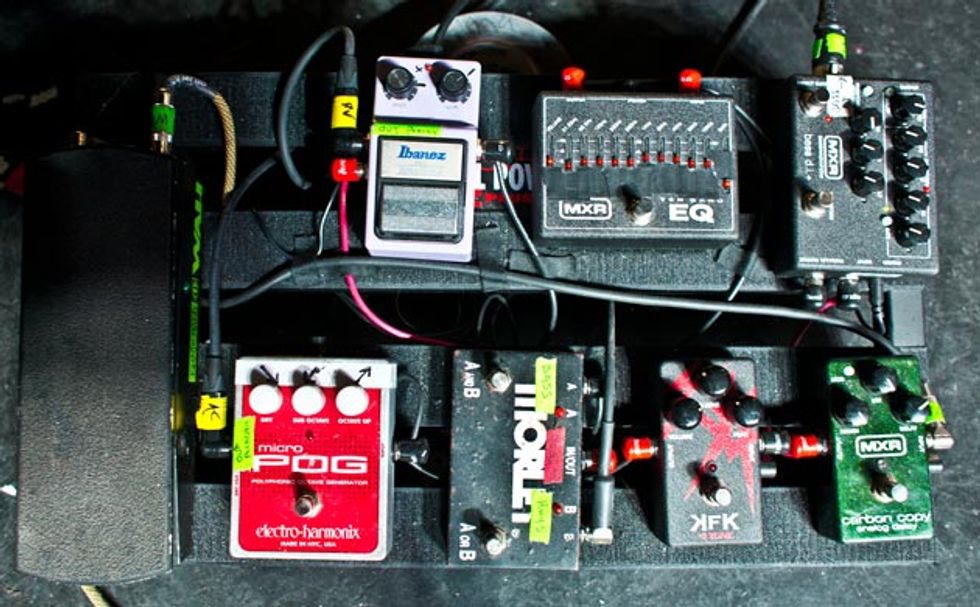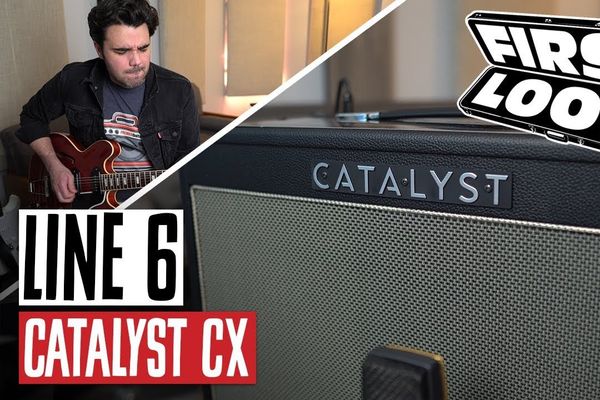Premier Guitar was allowed an in-depth look at the touring rig of Jesse Keeler, the bass player in Death From Above 1979. Keeler has inspired a devout following of bass players to take on a new role in punk, and his unique approach to gear has helped solidify DFA’s sound and propel them into cult status.
Basses

After being a longtime Rickenbacker user, Keeler is now very comfortable with a ’69 Dan Armstrong. He likes the short scale, 24-fret design, which better suits his playing style and approach than anything he’s ever played.

A ’71 tags along as a backup, and the only mod is a “permanent” bridge to keep his intonation constant.

Keeler also utilizes a vintage JUNO-60 keyboard which runs through his rig as well.
Amps

Keeler is running two very interesting and powerful amplifiers. He is using an early seventies Peavey Super Festival 800B that he purchased for $125. All of his distortion comes from the amp.

The second amp Keeler uses is the Acoustic 450B (which oddly enough is 600 watts), and his cabinets are vintage Traynor 8x10 cabs loaded with a mix of different speakers.
Effects

Keeler’s aggressive, distorted bass tone comes mostly from his amps. His pedals are relatively straightforward, and he uses them sparingly. (Interestingly, when he switches to synth during a show, he routes his Roland Juno-60 through many of the same pedals and into his bass amps.) The bass signal hits the pedalboard via a Dunlop wah, then goes into an MXR M80 Bass D.I.+ that sends only sub frequencies to the venue’s front-of-house engineer. From there, the signal goes to an MXR 10-Band EQ (to add guitar-like midrange), an MXR Carbon Copy Analog Delay, and then a Morley A/B switcher that selects between the bass signal coming from the Carbon Copy or direct feed from the Juno-60 synth inputs. Whichever instrument is being fed into the Morley is then sent to an Ibanez CS9 Stereo Chorus, which sends a feed to each of Keeler’s amps. The CS9’s left (mono) output feeds his Peavey head, while the right output sends the signal to an Electro-Harmonix Micro POG, a Dunlop Kerry King KFK Q Zone, and finally the Acoustic head.

